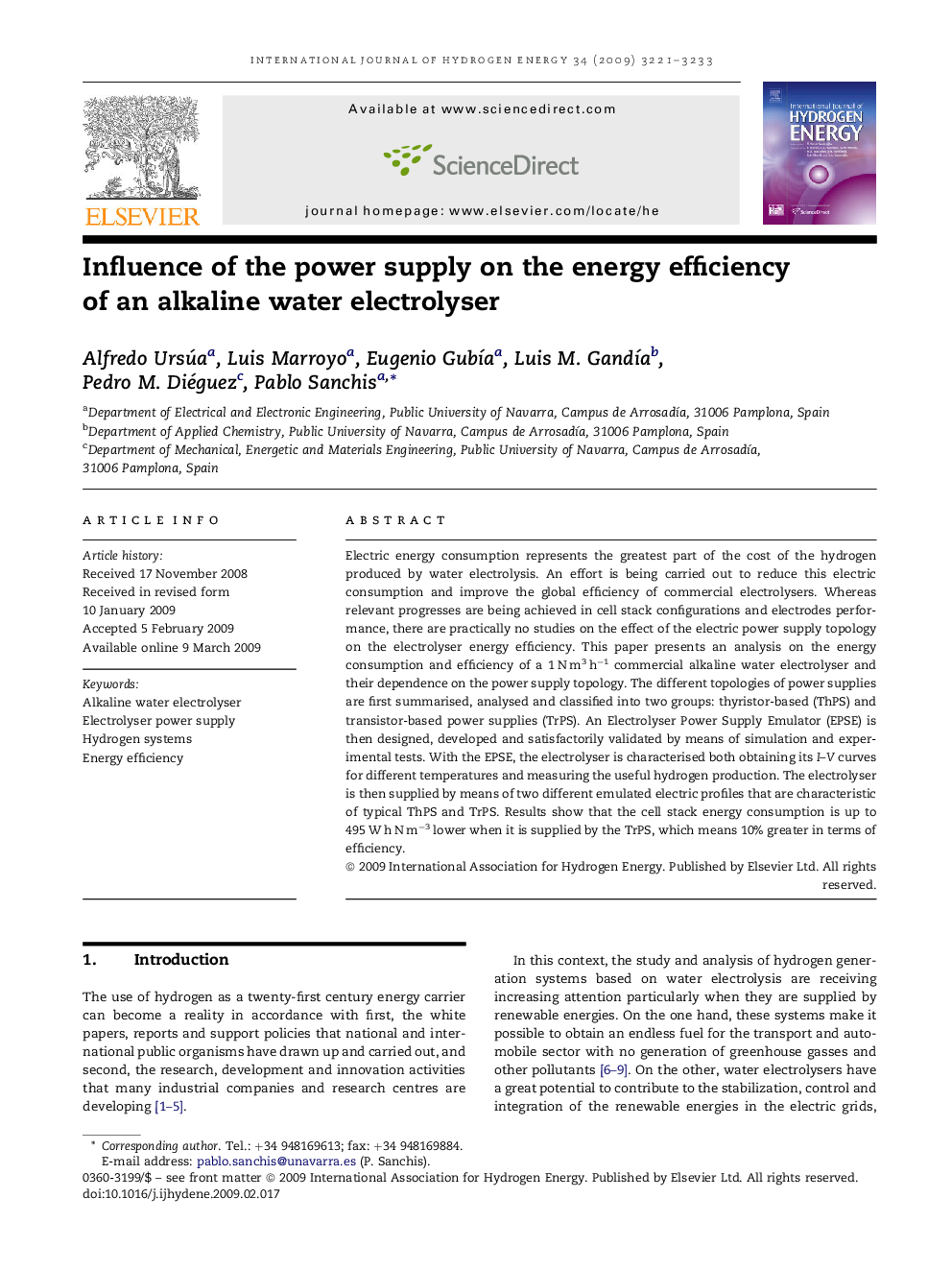| Article ID | Journal | Published Year | Pages | File Type |
|---|---|---|---|---|
| 1274021 | International Journal of Hydrogen Energy | 2009 | 13 Pages |
Electric energy consumption represents the greatest part of the cost of the hydrogen produced by water electrolysis. An effort is being carried out to reduce this electric consumption and improve the global efficiency of commercial electrolysers. Whereas relevant progresses are being achieved in cell stack configurations and electrodes performance, there are practically no studies on the effect of the electric power supply topology on the electrolyser energy efficiency. This paper presents an analysis on the energy consumption and efficiency of a 1 N m3 h−1 commercial alkaline water electrolyser and their dependence on the power supply topology. The different topologies of power supplies are first summarised, analysed and classified into two groups: thyristor-based (ThPS) and transistor-based power supplies (TrPS). An Electrolyser Power Supply Emulator (EPSE) is then designed, developed and satisfactorily validated by means of simulation and experimental tests. With the EPSE, the electrolyser is characterised both obtaining its I–V curves for different temperatures and measuring the useful hydrogen production. The electrolyser is then supplied by means of two different emulated electric profiles that are characteristic of typical ThPS and TrPS. Results show that the cell stack energy consumption is up to 495 W h N m−3 lower when it is supplied by the TrPS, which means 10% greater in terms of efficiency.
